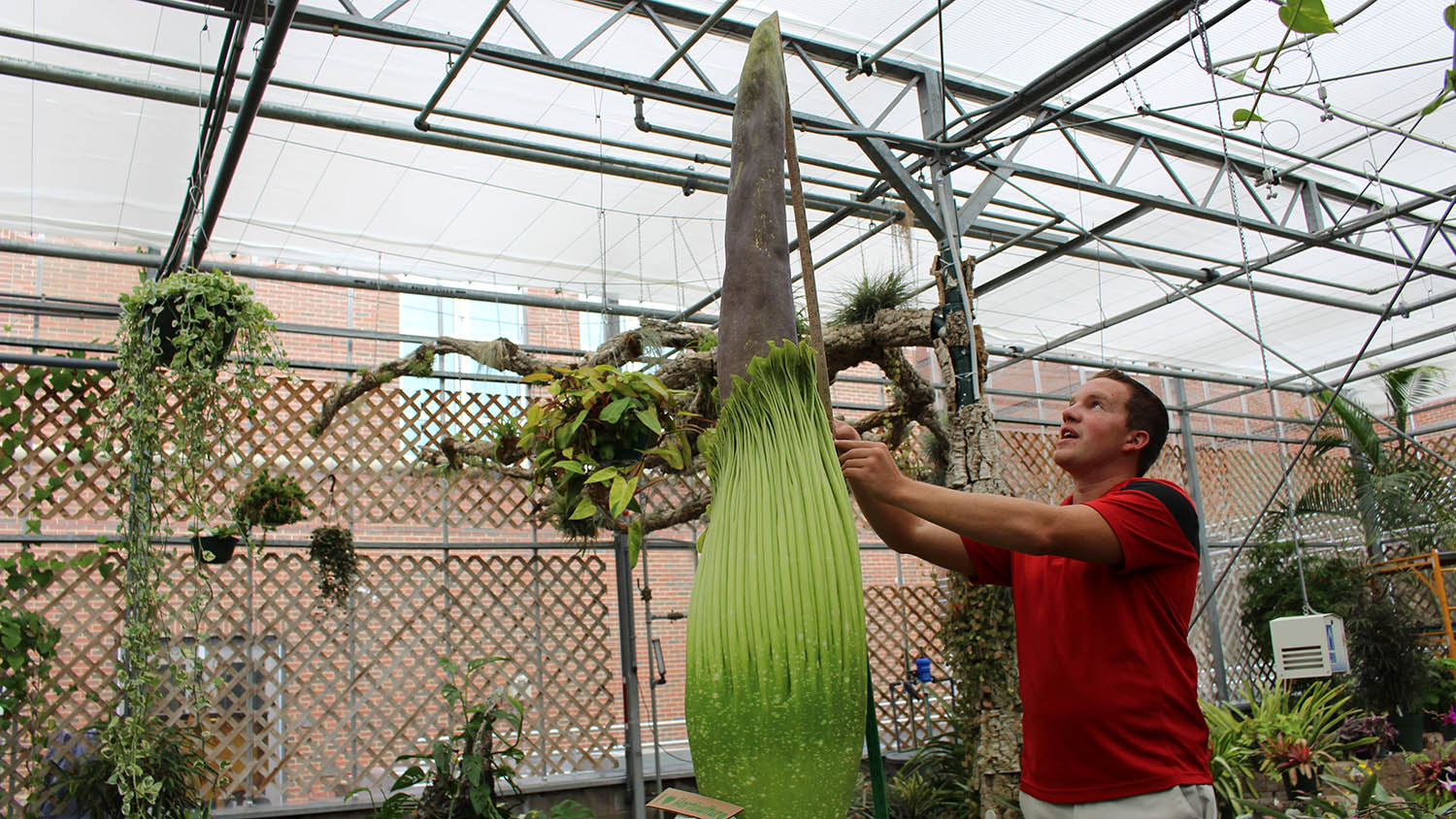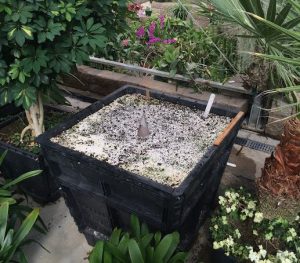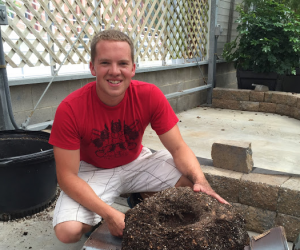Plant Prepares to Put Up a Big Stink at NC State University

Scientists at NC State University watched a tropical plant closely this past week as it bloomed, sending out not just a big flower – one of the largest in the plant kingdom – but a big stink as well.
The rare titan arum (Amorphophallus titanum) is also known as the corpse flower because it can smell like rotting flesh. The plant grew to be more than six feet tall and, starting Sept. 22 (and into the wee hours of Sept. 23), it unfolded a magnificent flower around three feet wide.
How a Corpse Flower Took Root at NC State
 Brandon Huber, a Horticultural Sciences student pursuing his master’s degree at NC State, received his titan arum nine years ago when he was visiting the Huntington Botanical Gardens in California. Then, it was a dormant four-year old corm, an underground stem about the size of a softball. The corm has since grown to 51 pounds. Huber brought the titan arum with him to NC State.
Brandon Huber, a Horticultural Sciences student pursuing his master’s degree at NC State, received his titan arum nine years ago when he was visiting the Huntington Botanical Gardens in California. Then, it was a dormant four-year old corm, an underground stem about the size of a softball. The corm has since grown to 51 pounds. Huber brought the titan arum with him to NC State.
This is the plant’s first bloom, and it comes amid a rash of corpse flower blooms nationwide in recent months. Some 200 Amorphophallus titanum blooms have occurred in cultivation in the past 127 years, when the first bloomed in London.
A Howlingly Pungent Flower Named Lupin
To honor the plant’s connection to NC State, Huber named his titan arum Lupin, after Remus Lupin, a werewolf from the Harry Potter series whose name comes from the Latin word meaning wolf. Using the hashtag #Lupin2016, you can follow the plant’s progress on Instagram and Twitter.
Huber has made arrangements to pollinate his plant using pollen from a titan arum that bloomed at the University of Wisconsin a few weeks ago. If that pollination is successful, he could have blooming offspring in about a decade.
Huber and Diane Mays, who curates the greenhouse conservatory where the plant is held, both say this could be a once-in-a-lifetime event for plant lovers.
“I feel like I have a front row seat. To have it in our region and our greenhouse, we feel very special,” Mays says. “It’s such a spectacular plant.”
About Brandon Huber
Brandon has been growing plants since early childhood and as a teen won several prizes for aroid plants he entered in for the Philadelphia Flower Show. Aroids are members of the Araceae family of plants, sometimes known as the Philodendron or Arum family.
Huber’s research at NC State focuses on breeding stevia, a natural sugar substitute.
This post was originally published in College of Agriculture and Life Sciences News.
- Categories:


